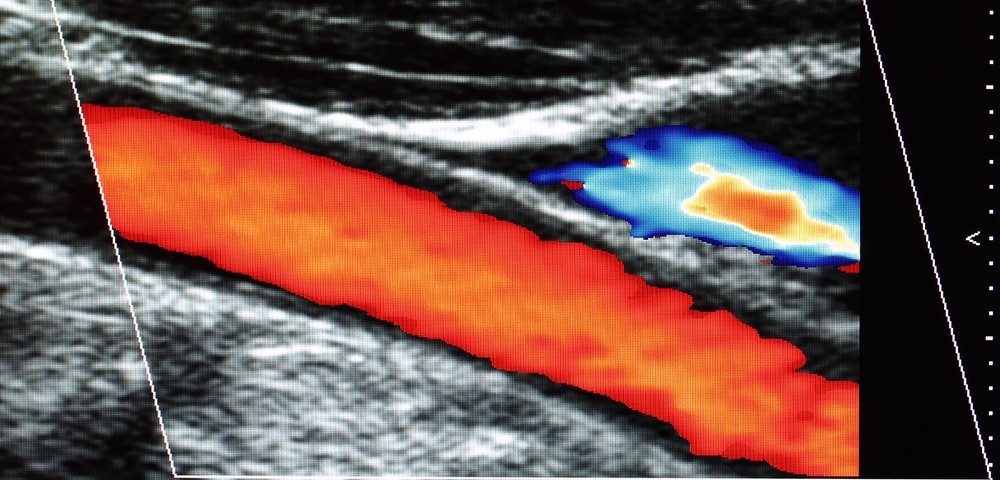Measuring blood flow in prostate blood vessels with a non-invasive ultrasound technique — the power Doppler transrectal ultrasonography (PDUS) — helps identify benign prostatic hyperplasia (BPH) patients with lower urinary tract symptoms, according to a study titled “Clinical Significance of the Resistive Index of Prostatic Blood Flow According to Prostate Size in Benign Prostatic Hyperplasia,” published in the International Neurology Journal.
BPH primarily affects older men and is characterized by progressive symptomatic symptoms that can have a severe impact on patients’ quality of life. BPH is usually assessed by transrectal ultrasonography, a technique that has rapidly advanced. Moreover, prostate blood flow can be measured by transrectal color Doppler imaging.
While Doppler ultrasounds reflected sound waves to see how blood flows through a blood vessel, color Doppler uses standard ultrasound methods to produce a picture of a blood vessel that is then converted from a computer into colors that are overlaid on the image of the blood vessel and represent the speed and direction of blood flow through the vessel.
Researchers investigated the clinical factors and resistive indexes of prostate and urethral blood flows in 110 patients with BPH and lower urinary tract symptoms (LUTS) using PDUS analyzing data. The resistive indexes were measured in the capsular and urethral arteries of the prostate identified via PDUS. Besides resistive indexes, other parameters analyzed included International Prostate Symptom Score (IPSS), maximal flow rate, total prostate volume, transition zone volume, transition zone index, and presence of intravesical prostatic protrusion (IPP).
The same urologist evaluated all patients, who were assessed and divided into groups according to International Prostate Symptom Score (IPSS, mild symptoms, 0-7; moderate symptoms, 8-19; and severe symptoms, 20-35); Qmax (less than 10 mL/sec and 10 or greater mL/sec); TPV (less than 30 and 30 or greater mL), and presence or absence of IPP.
The results revealed no significance between the mean value of resistive indexes of prostate and urethral blood flows and IPSS or Qmax. Notably, mean resistive indexes of the urethral artery and left and right capsular arteries were dependent on prostate size and the presence of IPP, a relationship proven to be statistically significant.
These results suggest that PDUS can effectively measure resistive indexes of prostate blood flow and may serve as a potential noninvasive diagnostic for BPH in men with lower urinary tract symptoms.

